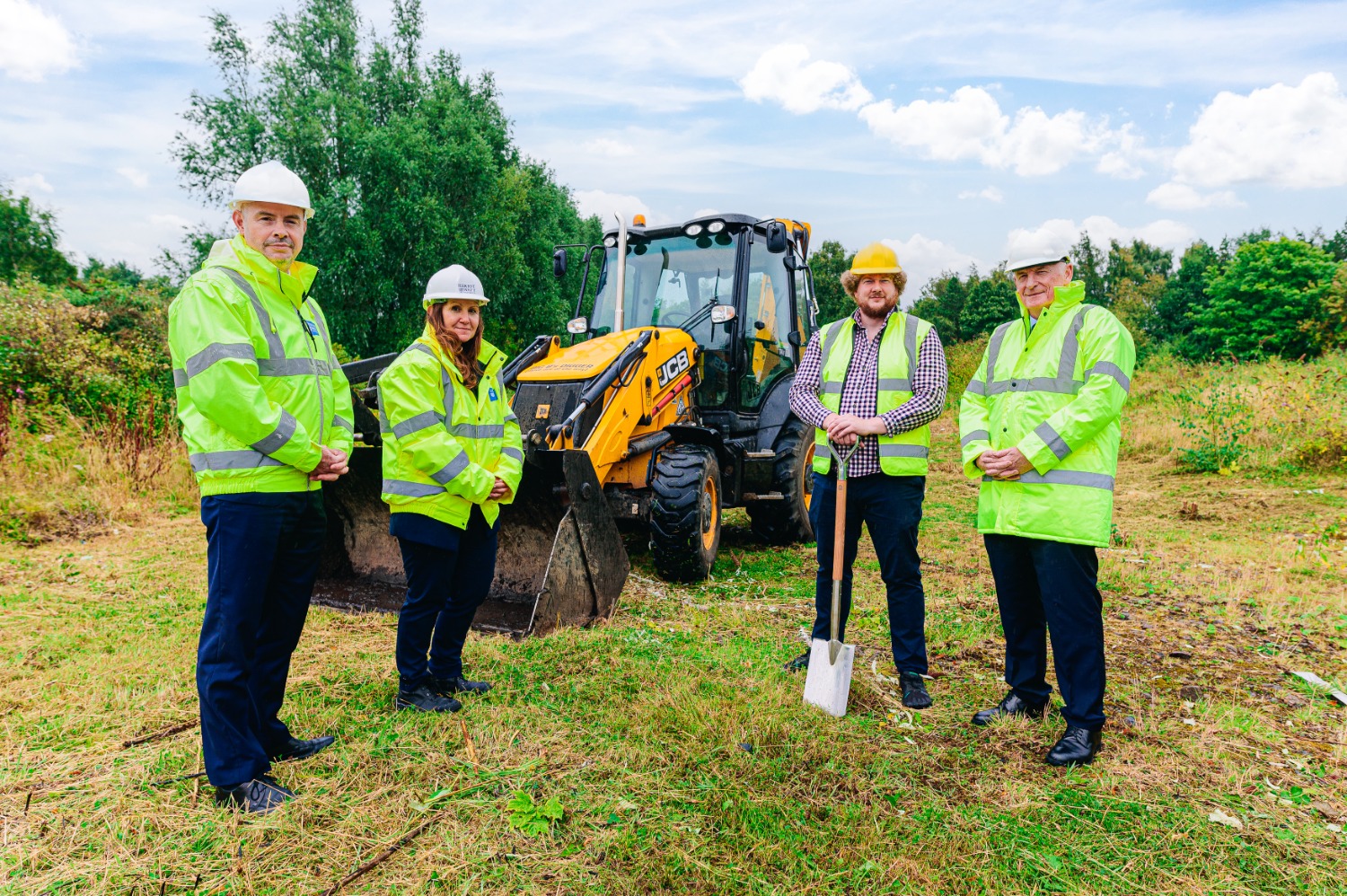
AN associate professor at Heriot-Watt University has revealed he is relishing the collaborative approach being taken with contractors on the learning institute’s £2.5 million build of a Quantum Communications Hub Optical Ground Station.
Dr Ross Donaldson, who specialises in quantum communication technologies, is project lead on the build at Heriot-Watt’s Research Park which, once complete, will aid the UK in tackling cyber-attacks, boost communication services such as 6G, and help locate space debris.
A groundbreaking ceremony was held in late August, with the project being led by Edinburgh-based EC Specialist Contractors, and Harley Haddow and ECD Architects responsible for the design. Dr Donaldson first began planning the initiative in 2017, but supply shortages brought on by the Covid pandemic meant all necessary equipment and infrastructure wasn’t received until last year.
The 16×16 metre site will feature a state-of-the-art telescope, a 4.5-metre robotic observatory dome, a portacabin facility, and an environmental monitor – with hopes of the site being expanded in the future.
The main aim of the project concerns secure communications. Dr Donaldson explained, “There’s technology called the quantum computer, which when realised properly will make a lot of our stuff online with encryption very insecure. So, quantum communications, because we utilise special quantum properties, means that we know our communications are going to be secure for much longer. We can build that infrastructure into the UK, meaning our national infrastructure is much safer and we’re more resistant to cyber-attacks.”
To be based at the Research Park in Riccarton, the academic explained the importance of transitioning the technology into the real world in areas people and fibre networks can connect to – with the facility set to reach Livingston, Bathgate and Glasgow, as well as other bases in the south of England.
As well as guarding against cyber-attacks, the centre will allow for space debris – such as small parts dislodged from satellites – to be tracked and blasted out of orbit using lasers. Initially, this will be done with outside teams but there are long-term hopes of creating a new base potentially off the mainland to lead such work.
Key to the success of the initial facility will be meeting the tight build specifications, with the university and contractors working closely together to ensure both parties have an understanding of both construction and quantum communications.
Dr Donaldson explained factors like vibration could present problem for the telescope, so dialogue has taken place to mitigate potential challenges at the outset. With this being the first construction project he’s been involved in, Dr Donaldson said pouring over various plans and drawings has been a learning curve – but he’s relishing the experience.
“I’m really enjoying it. The construction guys have a wealth of experience and knowledge of things that I’ve never even thought about – so it’s really interesting to work with them.”
Excavation work is due to get underway in early September, with the ground having now been cleared for construction work. The university hopes the equipment will be installed by mid-November, allowing for the start of calibration testing in 2025.
The facility will act as the first part of a space cluster at the site, coinciding with the university’s launch of a new aerospace programme and drive to bring more space companies into the park – with hopes also of continuing Heriot-Watt’s international appeal.
“Heriot-Watt is a global university with three campuses in Scotland as well as in Dubai and Malaysia,” Dr Donaldson added. “Having this facility here will encourage students to come and study STEM subjects.”
A graduate of the learning institute himself, he recalled the benefits of having students from France join his third-year undergraduate course. “It opens people’s minds more. It opens your eyes up to how the rest of the world works – not just in Europe, but when they’re coming from much further afield as well.”
The facility will serve as a valuable education resource, with Heriot-Watt students utilising it as part of their courses, while local school pupils will be invited to build their knowledge and understanding of satellite communications and astronomy.







